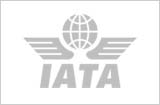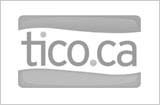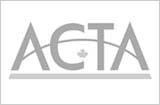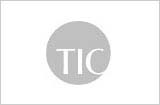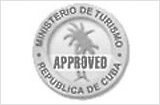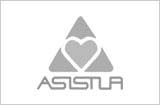CUBA'S ECONOMY
The economy of Cuba is a largely state-controlled, centrally planned economy overseen by the Cuban government. Most of the means of production are owned and run by the government, and most of the labor force is employed by the state. Recent years have seen a trend towards more private sector employment though.
A sharp fall in GDP of 35% in 1990-1993 due to the collapse of the Eastern European bloc and the loss of Soviet subsidies, accompanied by a decline in exports from US$8.1 billion (1989) to US$1.7 billion (1993), forced the government to take remedial action and the decision was made to start the complex process of transition to a mixed economy.
To alleviate the economic crisis, from 1992 on the government introduced a few market-oriented reforms, including opening to tourism, encouraging foreign investment, legalizing the dollar, and authorizing self-employment for some 150 occupations.
Sugar, which was traditionally the leading foreign exchange earner, fell upon troubled times. In 1989, production was more than 8 million tonnes, but by 2009, it had fallen to under 2 million tonnes. Low world prices, poor weather and shortages of fertilizers, oil and spare parts limited any great improvement in income. In 2003, 71 of the country’s 156 sugar mills were closed and the land under production cut by 60%.
In the mid 1990s tourism surpassed sugar, long the mainstay of the Cuban economy, as the primary source of foreign currency. Despite political crises, numbers of visitors rose steadily from 546,000 in 1993 to 2.4 million in 2009. Cuban revenue from tourism was reported to be $2.1 billion in 2009. Most tourists come from Canada, Great Britain and Spain. A study for the International Monetary Fund estimates that as many as 3.5 million Americans could visit Cuba annually if the travel ban was lifted.
All sectors of the economy were open to foreign investment and in some areas majority foreign shareholdings were allowed. Some 400 foreign companies were established in Cuba before the COVID-19 pandemic, with capital from 38 countries in 26 economic sectors, mostly in tourism, energy, mining, communications and agriculture. The only sectors where investment is not allowed are national defense, health and education. Under new legislation passed in 1996, free-trade zones were established, the first one in Havana with others in Cienfuegos, Mariel and Wajay, outside Havana. Some 75% of production could be exported but the rest should be sold in Cuba.
Cuba is rich in mineral ores, especially nickel, cobalt, copper, manganese and iron. Cuba’s three nickel- processing plants make it one of the world’s largest producers. About 37% of the world’s nickel reserves lie along the coast of the northeastern province of Holguin. Since 1990 Canadian mining companies such as Sherrit International have become involved in joint ventures to develop the country’s mining potential.
About 50 percent of Cuba’s land is classified as agricultural. Cuba’s agricultural land is about evenly split between cropland (46 percent) and pasture (54 percent).
Citrus became an important agricultural export with production of around 1,850,000 tonnes a year. Production was mostly in the centre and west of the island and in the Isla de la Juventud. Cuba became a member of the International Coffee Agreement in 1985 and produces about 22,000 tonnes of coffee a year but exports are minimal. Drought and disease have limited expansion. Tobacco is a traditional crop and Cuban cigars are world famous.
As a result of severe shortages in petroleum, pesticides and fertilizers, Cuba was forced to practice organic agriculture on a nation-wide scale. Previously highly mechanized farming methods and monocultures of foreign crop species were replaced with animal traction, crop and pasture rotation, soil conservation, organic soil inputs, biopesticides and biofertilizers. And a growing percentage of the agricultural production takes place now in the so-called urban agriculture. In 2002, 35,000 acres (140 km 2) of urban gardens produced 3.4 million metric tonnes of food. Current estimates are as high as 81,000 acres (330 km 2). In Havana, 90% of the city's fresh produce come from local urban farms and gardens. With over 8,000 hectares of urban farms, 25,000 urban farmers and hundreds of researchers and extension workers, the capital of the island has become a world leader in urban agriculture.
Cuba's pharmaceutical and biotechnology industry is another important emerging sector. Exports of pharmaceutical and biotech products averaged between $300 and $350 million from 2007-2009. The country sells over 200 different products such as vaccines against meningitis and hepatitis B.
Cuba’s Economy after the COVID-19 Pandemic
The COVID-19 pandemic had a devastating impact on Cuba's economy, which heavily relies on tourism. The number of tourists visiting the island plummeted from 4 million in 2019 to just 356,000 in 2021 and 1.7 million in 2022. Economy Minister Alejandro Gil projected that tourist arrivals would reach 3.5 million in 2023, but acknowledged that the pandemic and new sanctions imposed by the Trump administration severely affected dollar-earning sectors like tourism, foreign investment, trade, and remittances.
This severe economic crisis, one of the worst since the 1959 revolution led by Fidel Castro, has resulted in severe shortages of food, fuel, and medicine in Cuba. The collapse of the tourism industry has left the country without enough foreign currency to import essential farming supplies such as fertilizer and animal feed. Economy Minister Alejandro Gil emphasized this issue during a speech at the 2022 year-end session of Cuba's National Assembly, stating that the country lacks sufficient foreign currency to pay for necessary fuel, food, and agricultural imports. Consequently, Cuba will increasingly have to rely on domestic production to meet its needs.
As a result of these challenges, Cuba experienced a 30% decrease in imports and a 45% decrease in exports in 2021 compared to 2018 levels. In response, the government agreed to expand private sector activity to boost output and alleviate goods shortages. This included granting private company status to 2,000 listed professions, allowing for partnerships with foreign investors and reducing state control over commercial activities.
Additionally, Cuba has been exporting healthcare services by sending physicians and nurses to countries like Brazil and Venezuela. The country has also garnered recognition for its reputable education and healthcare systems. Notably, Cuba has achieved a higher life expectancy than the United States and has successfully developed its own COVID-19 vaccine, making it the world's smallest country to do so.
Approximately 30% of Cuba's foreign exchange earnings come from tobacco and sugar. Furthermore, Economy Minister Alejandro Gil noted that annual inflation stood at around 45% in 2023, down from 77% in 2021.
US Cuba Legal Travel
In terms of visiting Cuba, legal travel from the USA has been all but impossible for over half a century.
Right now, however, a rare alteration in travel regulations made by former US President Barack Obama offers US citizens the opportunity to go to Cuba under the General License for Educational Activities, Support for the Cuban People, Professional Research, among others.
After the publication of the new updates to the Cuban Assets Control Regulations (31 CFR Part 515) on February 6, 2025, and July 14, 2025, all 12 categories of legal Cuba travel remain unaffected; except for the Individual People-to-people General License for Cuba travel which has been ended (the Group People-to-people General License) has been re-authorized though.
The future of travel from the US to Cuba is uncertain, and right now, US travelers still have the chance to go to Cuba legally for Professional Research, Support for the Cuban People, Professional Meetings, Religious Activities, and other venues.
Cuba Themed Tours
If you’ve got an idea of which style of trip will suit you best, take a look at our different trip themes below, as there’s something to suit everyone. Not only are there themed tours to fit any budget and interest, each Authentic Cuba Travel® experience immerses you in the authentic Cuba so hard to explore while just staying in full packed beach resorts.
Festival Tours
Our festival tours give travelers VIP access to all venues and happenings of Cuba’s famous international events such as the Havana Jazz Festival, Book Fair, Ballet Festival and others.
Study Tours
Through peer to peer interaction, our Cuba Study Tours® transcend ordinary tourism by immersing American students in the local culture, history, politics, music and contemporary arts.
Cultural Tours
Cuba Pathfinder® is your gateway to discover the unique Cuban cultural heritage, a set of traditions & memories not showcased in museums but much alive & thriving.
Architecture Tours
An architectural passage through Cuba’s best preserved colonial cities and unique architectural heritage, our architecture tours visit all UNESCO World Heritage Sites in Cuba.
Photography Tours
Capturing stirring pictures of authentic Cuban destinations it is not the only mission of our photography tours. Capture the essence of the Cuban culture and the kindness of its people.
Educational Tours
Our educational tours represents a great opportunity for K-12 teachers, university & college professors to explore Cuba’s education system while exploring colonial cities, towns and villages.
Nature Tours
An odyssey into Cuba's tropical paradise, our nature & bird watching tours gain access to the most pristine natural sites, from UNESCO Biosphere Reserves to National Parks.
Jewish Tours
A journey into the Jewish history in Cuba, our tours will strengthen the ties between Cuban Jewish communities and North American Jews. All while visiting 4 UNESCO World Heritage Sites!
Sports Tours
What sets our sports tours apart are the private exchanges with players, coaches & staff as well as sports journalists & personalities. Then you have best seats at the games!
CUBA TOUR FINDER
Select your authentic Cuba trip from over 70 Cuba tours in seconds. Sort by departure date, price, destination and even Cuba travel theme.
QUICK CUBA TOUR FINDERList of Cuba Tours 2026
-
Tour Name
Tour Dates
Cost
-
Havana Film Festival
Havana, Vinales
Dec 8- Dec 15, 2025
$2,899 Book Now
-
Real Cuba Tour 12
Havana, Las Terrazas, Vinales
Dec 26- Jan 2, 2026
$2,799 Book Now
-
Cuba Engage Tour 12
Havana, Bay of Pigs, Trinidad
Dec 26- Jan 2, 2026
$2,799 Book Now
-
Cuba Education Tour 9
Havana, Cienfuegos, Trinidad
Dec 26- Jan 2, 2026
$2,599 Book Now
-
Cuba Education Tour 10
Havana, Bay of Pigs, Santa Clara
Dec 26- Jan 2, 2026
$2,599 Book Now
-
Cuba Education Tour 11
Havana, Santiago de Cuba
Dec 26- Jan 2, 2026
$2,799 Book Now
-
Bird Watching Tour
Havana, Zapata, Trinidad
Dec 26- Jan 2, 2026
$2,599 Book Now
-
Cuba Architecture II
Havana, Cienfuegos, Trinidad
Dec 26- Jan 2, 2026
$2,799 Book Now
-
Cuba Art Explorer IV
Havana, Las Terrazas
Dec 26- Jan 2, 2026
$2,799 Book Now
-
Photography Tour IV
Havana, Vinales, Trinidad
Dec 26- Jan 2, 2026
$2,729 Book Now
-
Jewish Heritage Tour
Havana, Cienfuegos, Trinidad
Dec 26- Jan 2, 2026
$2,899 Book Now
-
Family Discovery Tour
Havana, Cienfuegos, Trinidad
Dec 26- Jan 2, 2026
$2,699 Book Now
-
Real Cuba Tour 1
Havana, Las Terrazas, Vinales
Jan 10- Jan 17, 2026
$2,599 Book Now
-
Cuba Engage Tour 1
Havana, Bay of Pigs, Trinidad
Jan 10- Jan 17, 2026
$2,599 Book Now
-
Cuba Jazz Festival
Havana, Cienfuegos, Trinidad
Jan 25- Feb 2, 2026
$3,099 Book Now
-
Santiago Jazz Festival
Santiago de Cuba
Jan 25- Feb 1, 2026
$2,899 Book Now
-
Havana Jazz Festival
Havana, Vinales
Jan 28- Feb 2, 2026
$2,499 Book Now
-
Havana Book Fair
Havana, Cienfuegos, Trinidad
Feb 13- Feb 20, 2026
$2,799 Book Now
-
Real Cuba Tour 2
Havana, Las Terrazas, Vinales
Feb 7- Feb 14, 2026
$2,599 Book Now
-
Cuba Engage Tour 2
Havana, Bay of Pigs, Trinidad
Feb 7- Feb 14, 2026
$2,599 Book Now
-
Habano Cigar Festival
Havana, Vinales
Feb 21- Feb 28, 2026
$8,999 Book Now
-
Cuba Education Tour 1
Havana, Cienfuegos, Trinidad
Feb 21- Feb 28, 2026
$2,599 Book Now
-
Cuba Education Tour 2
Havana, Cienfuegos, Trinidad
Feb 28- Mar 7, 2026
$2,599 Book Now
-
Cuba Al Natural
Havana, Zapata, Trinidad
Mar 7- Mar 18, 2026
$2,859 Book Now
-
Cuba Business Tour 1
Havana, Matanzas, Varadero
Mar 7- Mar 14, 2026
$2,599 Book Now
-
Healthcare Cuba Tour 1
Havana, Cienfuegos, Trinidad
Mar 7- Mar 14, 2026
$2,599 Book Now
-
Real Cuba Tour 3
Havana, Las Terrazas, Vinales
Mar 7- Mar 14, 2026
$2,599 Book Now
-
Cuba Engage Tour 3
Havana, Bay of Pigs, Trinidad
Mar 7- Mar 14, 2026
$2,599 Book Now
-
Cuba Art Explorer I
Havana, Vinales
Mar 7- Mar 14, 2026
$2,599 Book Now
-
Bird Watching Tour
Havana, Zapata, Trinidad
Mar 7- Mar 14, 2026
$2,599 Book Now
-
Cuba Education Tour 3
Havana, Cienfuegos, Trinidad
Mar 7- Mar 14, 2026
$2,599 Book Now
-
Cuba Education Tour 4
Havana, Vinales
Mar 14- Mar 21, 2026
$2,599 Book Now
-
Photography Tour I
Havana, Vinales, Trinidad
Apr 4- Apr 11, 2026
$2,629 Book Now
-
The Nature of Cuba
Havana, Vinales, Trinidad
Apr 4- Apr 13, 2026
$2,799 Book Now
-
Real Cuba Tour 4
Havana, Las Terrazas, Vinales
Apr 4- Apr 11, 2026
$2,599 Book Now
-
Cuba Engage Tour 4
Havana, Bay of Pigs, Trinidad
Apr 4- Apr 11, 2026
$2,599 Book Now
-
4 Biosphere Reserves
Rosario, Zapata, Buenavista
May 1- May 10, 2026
$2,999 Book Now
-
Real Cuba Tour 5
Havana, Las Terrazas, Vinales
May 9- May 16, 2026
$2,599 Book Now
-
Cuba Engage Tour 5
Havana, Bay of Pigs, Trinidad
May 9- May 16, 2026
$2,599 Book Now
-
Photography Tour II
Havana, Vinales, Trinidad
Jun 6- Jun 13, 2026
$2,629 Book Now
-
Cuba Art Explorer II
Havana, Cienfuegos, Trinidad
Jun 6- Jun 13, 2026
$2,599 Book Now
-
Cuba Education Tour 5
Havana, Cienfuegos, Trinidad
Jun 6- Jun 13, 2026
$2,599 Book Now
-
Real Cuba Tour 6
Havana, Las Terrazas, Vinales
Jun 6- Jun 13, 2026
$2,599 Book Now
-
Cuba Engage Tour 6
Havana, Bay of Pigs, Trinidad
Jun 6- Jun 13, 2026
$2,599 Book Now
-
Cuba Fire Festival
Havana, Santiago de Cuba
Jul 2- Jul 9, 2026
$2,799 Book Now
-
Real Cuba Tour 7
Havana, Las Terrazas, Vinales
Jul 4- Jul 11, 2026
$2,599 Book Now
-
Cuba Engage Tour 7
Havana, Bay of Pigs, Trinidad
Jul 4- Jul 11, 2026
$2,599 Book Now
-
Cuba Business Tour 2
Havana, Matanzas, Varadero
Jul 4- Jul 11, 2026
$2,599 Book Now
-
Healthcare Cuba Tour 2
Havana, Cienfuegos, Trinidad
Jul 4- Jul 11, 2026
$2,599 Book Now
-
Cuba Education Tour 6
Havana, Santiago de Cuba
Jul 4- Jul 11, 2026
$2,799 Book Now
-
Cuba Education Tour 7
Havana, Las Terrazas & Vinales
Jul 11- Jul 18, 2026
$2,599 Book Now
-
Jews of Cuba Travel
Havana, Santa Clara, Cienfuegos
Aug 6- Aug 13, 2026
$2,799 Book Now
-
Real Cuba Tour 8
Havana, Las Terrazas, Vinales
Aug 8- Aug 15, 2026
$2,599 Book Now
-
Cuba Engage Tour 8
Havana, Bay of Pigs, Trinidad
Aug 8- Aug 15, 2026
$2,599 Book Now
-
Photography Tour III
Havana, Vinales, Trinidad
Aug 8- Aug 15, 2026
$2,629 Book Now
-
Cuba Education Tour 8
Havana, Cienfuegos, Trinidad
Aug 8- Aug 15, 2026
$2,599 Book Now
-
Cuba Art Explorer III
Havana, Vinales
Aug 8- Aug 15, 2026
$2,599 Book Now
-
Cuba Legal Travel
Havana, Vinales
Aug 8- Aug 15, 2026
$2,799 Book Now
-
Cuba Architecture I
Havana, Cienfuegos, Trinidad
Aug 8- Aug 15, 2026
$2,599 Book Now
-
Seven Cities II
Havana, Santiago de Cuba
Aug 8- Aug 19, 2026
$3,329 Book Now
-
Real Cuba Tour 9
Havana, Las Terrazas, Vinales
Sep 5- Sep 12, 2026
$2,599 Book Now
-
Cuba Engage Tour 9
Havana, Bay of Pigs, Trinidad
Sep 5- Sep 12, 2026
$2,599 Book Now
-
Baseball Tour
Havana, Cienfuegos, Trinidad
Sep 5- Sep 12, 2026
$2,999 Book Now
-
African Heritage
Havana, Las Terrazas, Vinales
Oct 3- Oct 9, 2026
$2,699 Book Now
-
Real Cuba Tour 10
Havana, Las Terrazas, Vinales
Oct 3- Oct 10, 2026
$2,599 Book Now
-
Cuba Engage Tour 10
Havana, Bay of Pigs, Trinidad
Oct 3- Oct 10, 2026
$2,599 Book Now
-
Dance Cuba Tour
Havana, Las Terrazas
Oct 3- Oct 10, 2026
$2,599 Book Now
-
Performing Arts Tour
Havana, Cienfuegos, Trinidad
Oct 3- Oct 10, 2026
$2,599 Book Now
-
Cuba Ballet Festival
Havana, Vinales
Oct 31- Nov 7, 2026
$2,999 Book Now
-
Jo Jazz Havana
Havana, Las Terrazas, Vinales
Nov 4- Nov 11, 2026
$2,799 Book Now
-
Seven Cities I
Havana, Santiago de Cuba
Nov 5- Nov 16, 2026
$3,329 Book Now
-
Cuba Nature Tour
Havana, Vinales, Trinidad
Nov 6- Nov 15, 2026
$2,799 Book Now
-
Art & Fashion Festival
Havana, Cienfuegos, Trinidad
Nov 6- Nov 13, 2026
$2,699 Book Now
-
Real Cuba Tour 11
Havana, Las Terrazas, Vinales
Nov 7- Nov 14, 2026
$2,599 Book Now
-
Cuba Engage Tour 11
Havana, Bay of Pigs, Trinidad
Nov 7- Nov 14, 2026
$2,599 Book Now
-
Cuba Business Tour 3
Havana, Matanzas, Varadero
Nov 7- Nov 14, 2026
$2,599 Book Now
-
Healthcare Cuba Tour 3
Havana, Cienfuegos, Trinidad
Nov 7- Nov 14, 2026
$2,599 Book Now
-
Havana Art Biennial
Havana, Vinales
Dec 11- Dec 18, 2027
$2,799 Book Now
SUBSCRIBE
Sign up for email updates from Authentic Cuba Travel®. Our monthly newsletters are full of information on Cuba Study Tours®, Cuba Education Tours, Cuba Cultural Tours, Cuba Architecture Travel, Cuba Festival Travel, Cuba Nature & Bird Watching Travel & Sport Tours. Free Familiarization (FAM) Cuba Tours for educators. Get discounts from Authentic Cuba Travel®!
NewsletterMemberships & Affiliations
Bella Travel Group Ltd. (Federal Corporation number: 765324-7) owns and operates the following registered trademarks: Authentic Cuba Travel® is a trademark registered at the Canadian Intellectual Property Office (CIPO), Registration No. TMA975677 | Cuba Pathfinder® is a trademark registered at the Canadian Intellectual Property Office (CIPO), Registration No. TMA997988 | Cuba Pathfinder® is a trademark registered at the United States Patent and Trademark Office (USPTO), Registration No. 5498353 | Cuba Study Tours, Make Cuba Your Classroom® is a trademark registered at the United States Patent and Trademark Office (USPTO), Registration No. 5833051.

 1-877-280-2054 (North America)
1-877-280-2054 (North America) 647-351-8191
(Worldwide)
647-351-8191
(Worldwide)
 647-351-8191
(Worldwide)
647-351-8191
(Worldwide)











